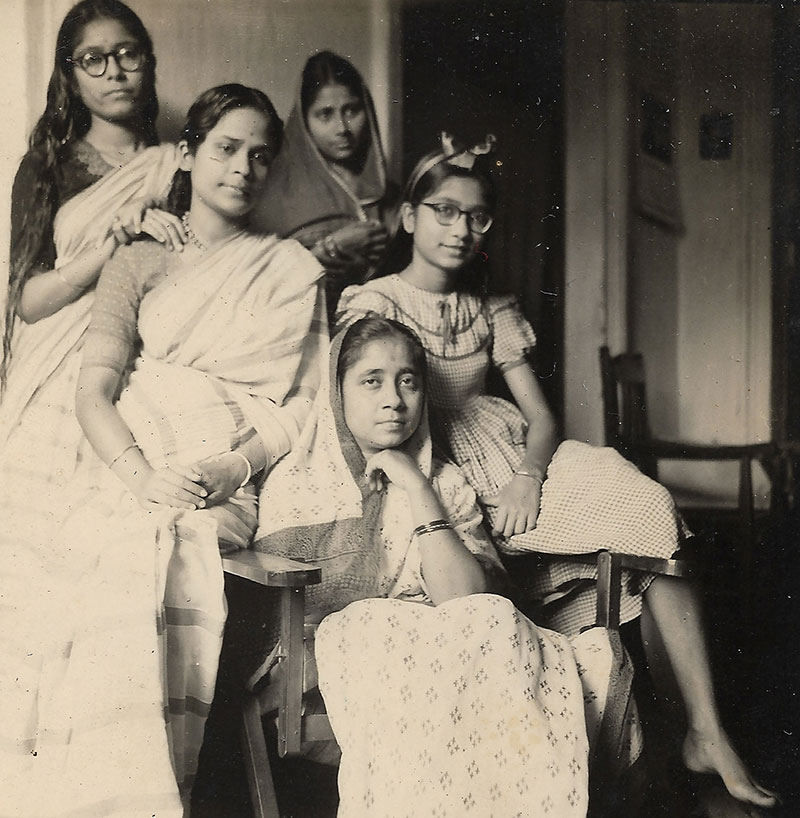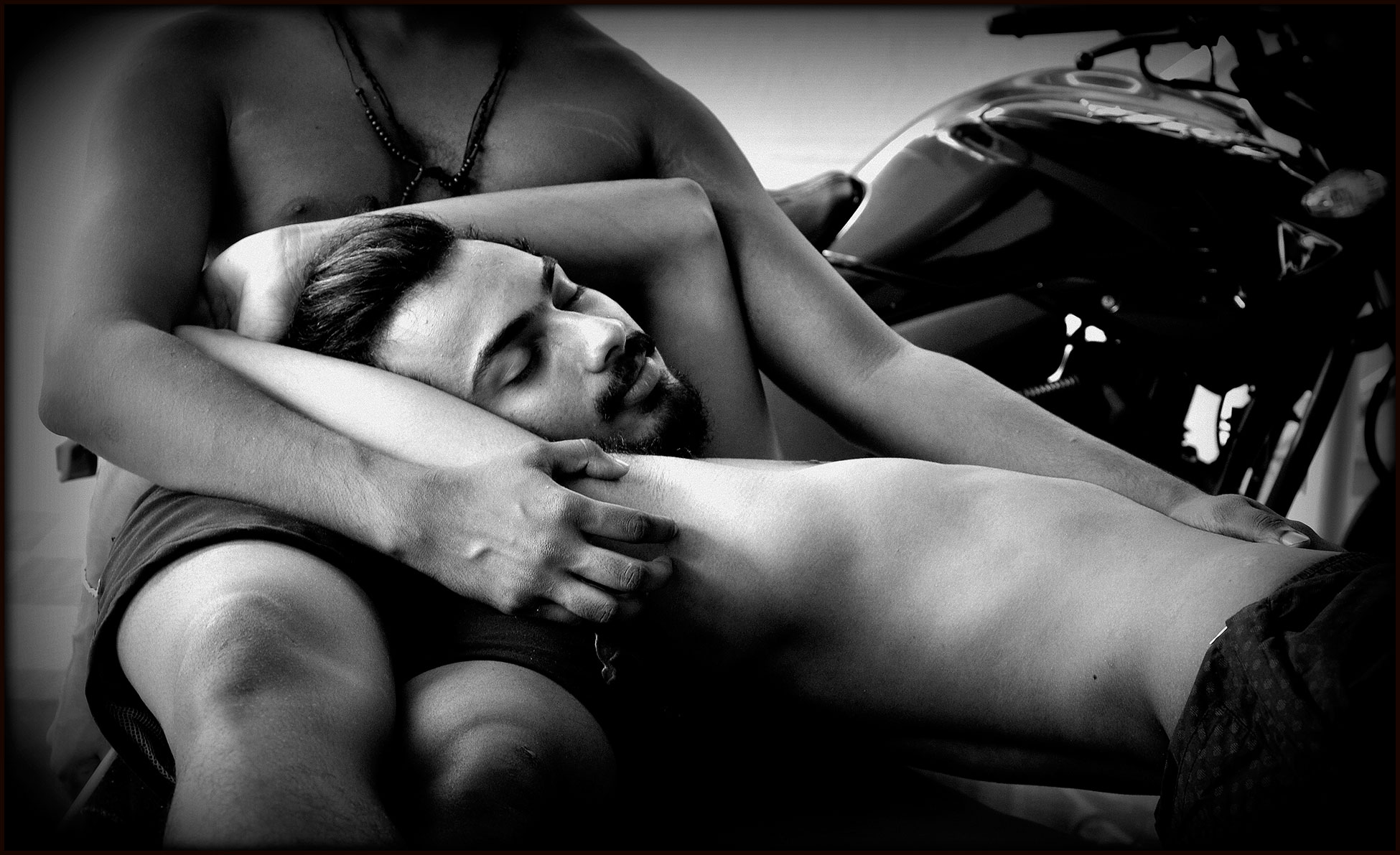Zoom In
Exhibition Review
PhotoMail constructively and
Critically zooms into
The life and work of photographers
Its art and techniques
Contemporary theory
Aesthetics, material philosophy and
Sociology
Gautham Ramachandran
reviews
Agni Shylam
Solo Show of Jiby Charles
at Dravidiaa Gallery, Fort Cochin
13th March 2018 – 27th March 2018
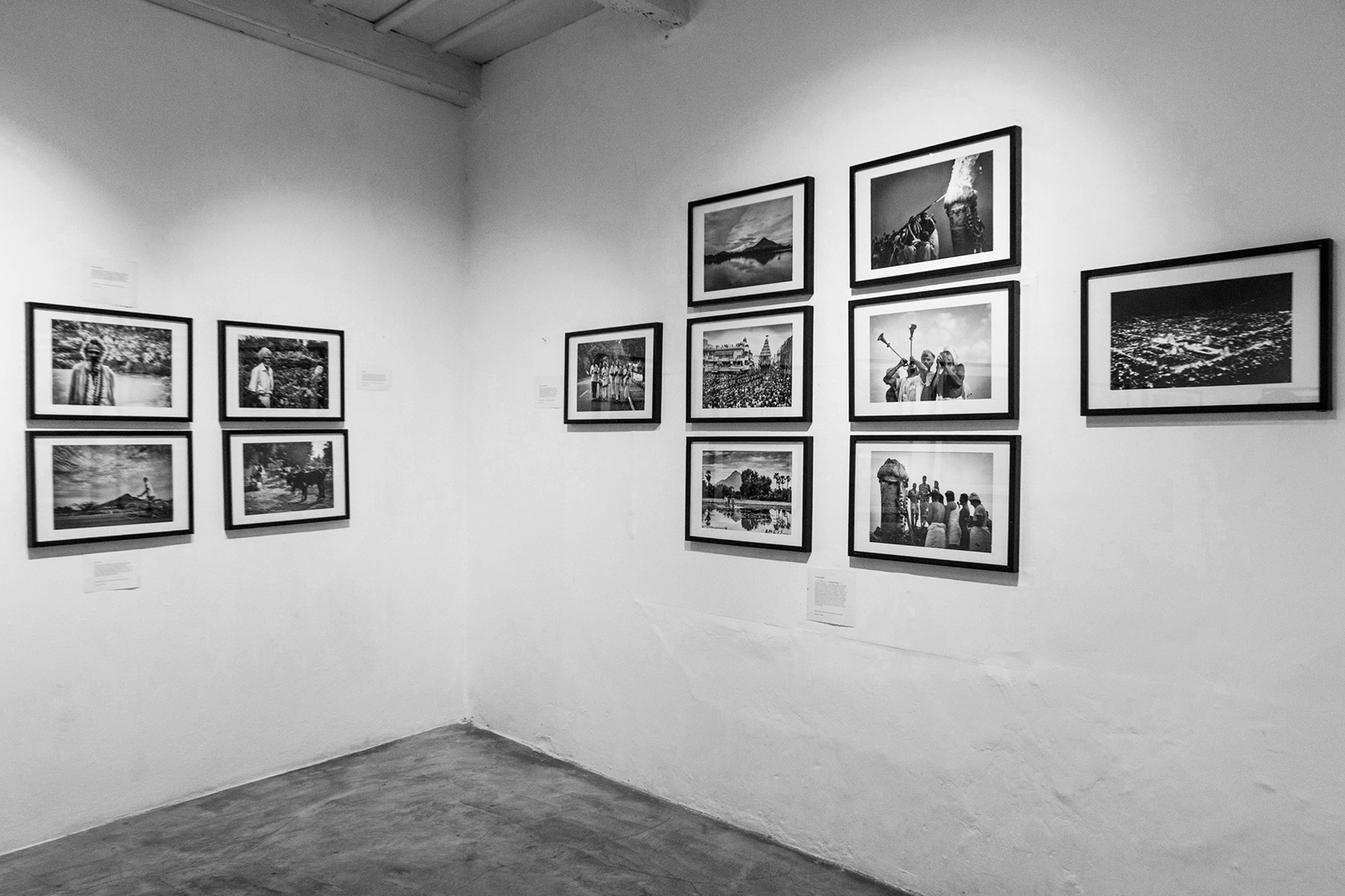
Show view at Draavidia Gallery
Photographic Inscriptions of Tiruvannamalai
Popular narratives seldom propagate unedited histories, instead preferring to project a biased and partial picture that makes the most sense in the social, economical, and political trends of a particular time. Tiruvannamalai’s identity in popular history is that of a Tamil Saivite-temple town imbued with the spirituality of Ramana Maharshi, and other lesser known Sadhus and their ashrams. This ‘persona’, oftentimes re-emphasized to spur the growth of the tourist economy through pilgrimage, overshadows a rich and multi-layered culture of this ancient town. An important Jain learning centre during the Sangam period, Tiruvannamalai’s legend stretches even further back, as an ancient nature-worship site – where the locals worshipped the mother goddess of fertility, Kotravai and Murugan, considered as the embodiment of Tamil language. Situated just 100 km from the Sangam-era sea port Arikamedu (presently, Chinnaveeranpatinam), a prominent centre along the Silk route, the town has been in a constant state of flux due to the continuous stream of various socio-political ideologies. The ancient pagan ideology most probably has its roots in early Saivism, where Rudra/Pasupati was considered as the supreme deity of all animals. Consequently, these indigenous deities are found in amorphous/abstract forms rather than the familiar anthropomorphic figures associated with Vedic Hinduism. The Bhakti movement initiated by the Alvars in 8th century CE saw these agamic traditions absorbed into Vedic Hinduism, where they were canonized with Vedic gods – Kotravai became Parvati, and Pasupati was transformed into Siva. Murugan, who was revered in ancient times as the personification of Tamil, was ‘rebranded’ as Karthikeya, the son of Siva – these steps all point towards a drive to homogenize a diverse community, since a clear hegemony would allow for better control of the society. The Mahadeepam festival during the month of Karthikai during which Murugan is celebrated as ‘Karthikeya’, in Tiruvannamalai, is today a world-renowned Hindu ritual. The origins of these festivities are unknown: was it a pagan ritual of fire worship? Or just a beacon that signalled the commencement of a trade fair? Historically, the Mahadeepam was more like a trade fair, during which people from about 30 neighbouring villages would gather in Tiruvannamalai to trade their products. Nowadays, indigenous/local produce is slowly being replaced by other mass produced products. The Deepam festival in modern times, commemorates Siva, as he was claimed to have appeared as an endless column of fire to test Brahma and Vishnu. This myth has seen the Annamalai hill (which has been proven to be a dead volcano) itself being claimed by mainstream Hinduism as the embodiment of Siva in ‘fire’ form. Where all the communities used to partake in the festivities of Deepam, it is now fast becoming an exclusively Hindu tradition. During the brief periods when Tiruvannamalai came under the political administration of the Sultans of the Carnatic, Sufism also took root within the community. Christianity has had a documented presence for 120 years, with the establishment of the Danish Mission School, in Tiruvannamalai, just 200km off of Tranquebar, which was a prominent Danish settlement in South India. Remnants of such forgotten/vanishing histories is strewn all over the town and it’s neighbourhood – Jain temples, Buddhist viharas, shrines of Kotravai etc. all in various degrees of degeneration.
Photographic mapping of Tiruvannamalai has always been a daunting task, due to its complex culture, and previous works done by prominent international photographers like Eliot Elisofon, and Henri Cartier-Bresson after him. The photographs of Ramana and the Annamalaiyar temple, which were published in Life magazine and Magnum, have established them as the most prominent identifiers of the town, making any previous attempts (if any, at all) to create a visual catalogue of a Tiruvannamalai that lay outside these stereotypes, all but indiscernible.



© Jiby Charles
“Agnishylam”, a collection of photographic prints created by Jiby Charles, has been on display in Dravidia Gallery in Fort Kochi since 9th March. A member of Google 360º street view photography team, Jiby was also one of the 24 contributing photographers in Ekalokam Trust for Photography’s pilot photo-art project, Project 365 Tiruvannamalai. Jiby created these images during his stay in Tiruvannamalai as a participating photographer of Project 365, fulfilling EtP’s vision of creating new avenues of exploration and providing a platform for young and upcoming photographers.
Conceptualized by Ekalokam Trust for Photography, Project 365 Tiruvannamalai’s vision was to expose the inconspicuous, layered and fast changing cultural landscape of Tiruvannamalai . Launched in a politically charged time, when identities are causing debates and conflicts, Project 365 intended to silently unravel the stories, myths, and legends of a land that is much more than a temple-town, through visuals. Twenty-four leading and young, Indian and International photographers worked on individual projects on diverse subjects, striving to actualize the collective vision of EtP, and created a robust digital archive consisting of 3000+ images through the duration of the project. The idea of a collective archive was to collate multiple perspectives of a single vision, thereby creating a body of work that would support itself by tuning out individual weaknesses, all the while preserving the uniqueness of each artist’s exploration.
Jiby has attempted to catalogue the rural landscape, traditions and lifestyle of the people living in the foot of the Annamalai hill. The visuals encompass a wide range of subjects – the Karthigai Deepam festivities, the Girivalam ritual, the cattle fair during the Deepam festival, and even a few images of the Sadhus of Tiruvannamalai. Some of the images feature the local subjects engaging in their daily routines, with the Annamalai hill acting as a sort of silent spectator in the background. The treatment of his images seeks to imbue them with a sense of spiritualism and ‘other-worldliness’. The images were not devoid of ‘exoticisations’, quite like the countless commercial photographs of south-east Asia produced over the last century. The images fail to engage with the subjects, and do not expose anything other than the already established stereotypes of a typical rural landscape. The photojournalistic and street photography compositional techniques employed by Jiby is apparent – mostly engaged in framing the image, only bothering with the lighting in post-production. The overall aesthetics are quite pointedly aimed to appeal to a westerner’s, and by extension, contemporary urbantastes – the extreme use of HDR imaging and high contrast in editing is a clear indicator of this attitude.
Gustav Le Gray is generally credited with inventing HDR photography in 1856, when he was faced with a fundamental problem with photographic technology – recording the broad spectrum of tones that a human eye can discern naturally. With the limited dynamic range of photographic film of the time, it was all too common for an image to have blown out highlights or blacked out shadows. Le Gray sidestepped this problem by exposing two films – one underexposed for the highlights, and the other overexposed for the shadows, and later combining them while printing to recover the loss in detail. The problem with combination printing is that it requires multiple exposures and perfect registration while printing to get results. 20th century photographers like Ansel Adams preferred to work with single negatives and bring out the details in development – by underexposing for the highlights, and overdeveloping the negative for the shadows. In 1954, almost a hundred years after Le Gray, Charles Wyckoff developed the three-layered film, with each layer having a different ISO rating. As a result, each layer of film recorded the image at different exposure levels, offsetting the dynamic range problem with fewer complications than Le Gray’s combination printing techniques. Manual tone mapping techniques, like dodging and burning, developed in the late 1950’s lent better control of tonality while printing the image. Modern digital HDR imaging was developed in the 1990’s through the work of Paul Debevec and Steve Mann, which enabled softwares to merge multiple images and apply tone mappings to particular areas of an image. With the innovations in modern photographic software, it is becoming increasingly easy to manipulate images even in mobile phones. Of course, with this liberalization, HDR photography is slowly devolving into a form of abstraction from its earliest intentions of re-creating an image as the human-eye would see it.
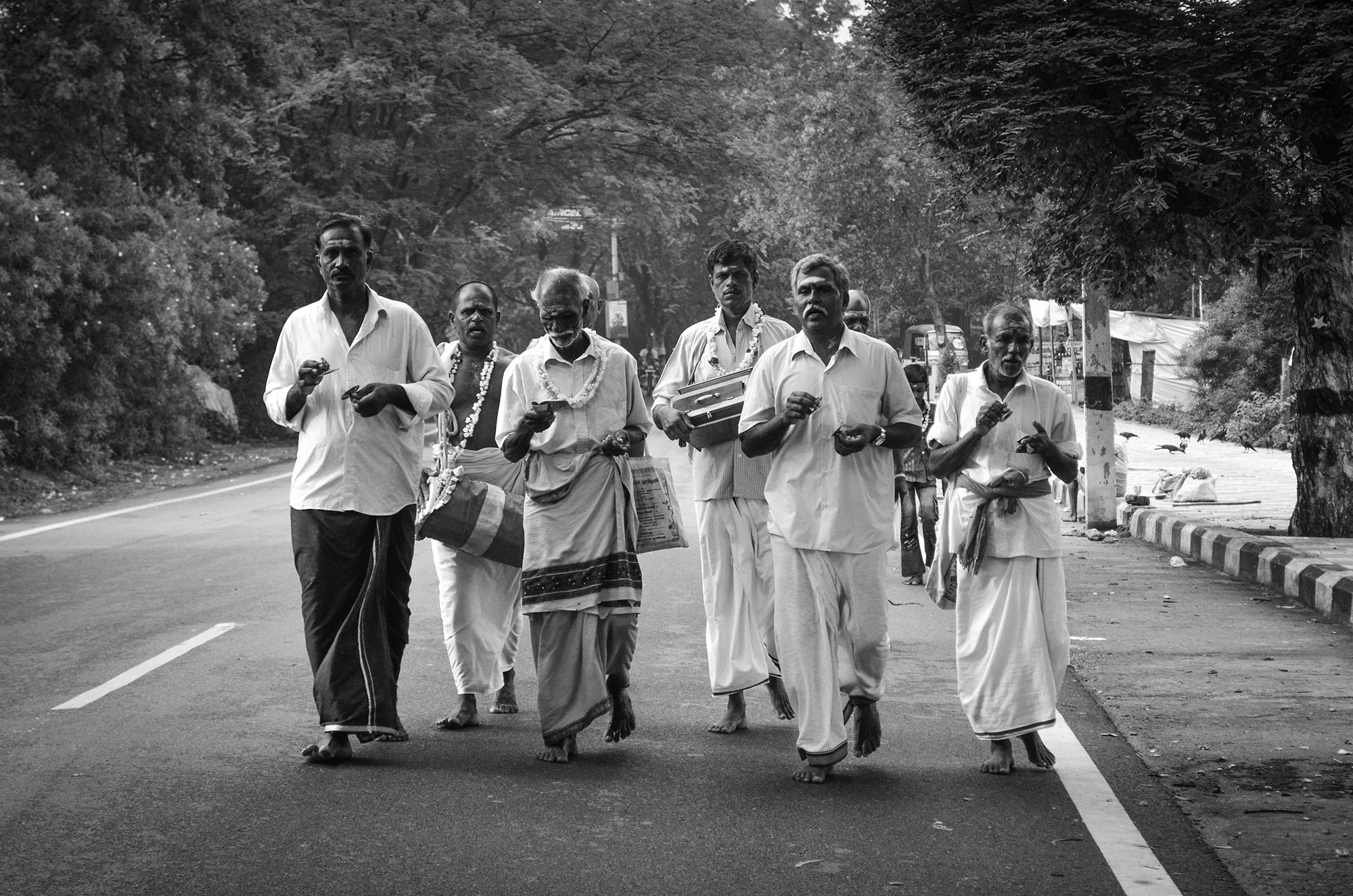
© Jiby Charles
Jiby’s photographs are an example of how these manipulation techniques are being used to create a fantastical landscape, rather than a ‘copy of reality’. This element of ‘fantasy’ is extremely conspicuous in all of his works, with the titular ‘Agnishylam’ occupying a prominent space in this narrative of Tiruvannamalai’s ‘rural lifestyle’. This fantasticality perpetually alienates the subjects and their ‘reality’ from the viewer – the same way Robert Capa’s ‘beautiful’ war photographs tones down the unprecedented violence and gore of WWII. Jiby’s photographs operate in a similar sense – it is presenting an increasingly ‘alien’ (rural) landscape to an urban population. An exhibit in the Shilparamam art & craft ‘village’ in Hyderabad is an expensive recreation of a fictional rural village, which speaks volumes about an urban population’s perception of a rural landscape.
From the time of introduction, photography as a medium was only affordable for the aristocratic and upper-middle class sections of Indian society. Consequently, the production, viewership, and marketing of photographs were predominantly informed by the aesthetics of those particular sections – which were fascinated by the naive and the exotic. Photographs of post-colonial India too, struggled with the burden of these aesthetics. Sunil Janah’s photographs of bare-breasted women peasants of Malabar, which he had published in 1948, were called out by Johny M L as similar to Gauguin’s paintings of Tahitian women – which elaborates the western gaze that was seeping in to the collective psyche of a modern Indian society that was still in its infancy. In contemporary times, social media platforms and rampant globalization has exacerbated this process of homogenization of the urban spectator – who dreams of a romanticized village where he wishes to dwell. Jiby Charles’ photographs play to those very romanticizations. Where he somewhat escaped from the specter of Ramana and Annamalaiyar, Jiby seems to have fallen into a different set of stereotypes. Although it seems harsh to be critical of these images, especially since this was his debut project, the shortcomings of the images cannot be overlooked. These apparent ‘exoticisations’ are not unnatural, manifesting themselves when a photographer shoots in unfamiliar/uncharted landscapes, but the conscious effort to focus on these stereotypes to appeal to a western/urban audience, brings Jiby’s images back into the realm of the ‘popular narrative’ – the very notion Project 365 went against. To his credit though, Jiby has collated his photographs by keenly exploring Tiruvannamalai to a large extent.

Gautham Ramachandran is an upcoming artist who works with Photography, Printmaking, and Painting. He is a graduate of The Govt. College of Fine Arts, Thrissur where he received his degree in Painting, and completed his Masters in Printmaking from the SN School of Arts and Communication, Hyderabad.
Published on April 4, 2018
Share
Related Articles

In my taxi, when a photo artist becomes a cab driver
What motivated Weideman to keep photographing? The answer to this is also an important quality that makes his photographs intriguing. He continued shooting even though he was not exhibiting nor getting into any sort of limelight until the mid-90s. Passion for the medium, of course. But there is more.
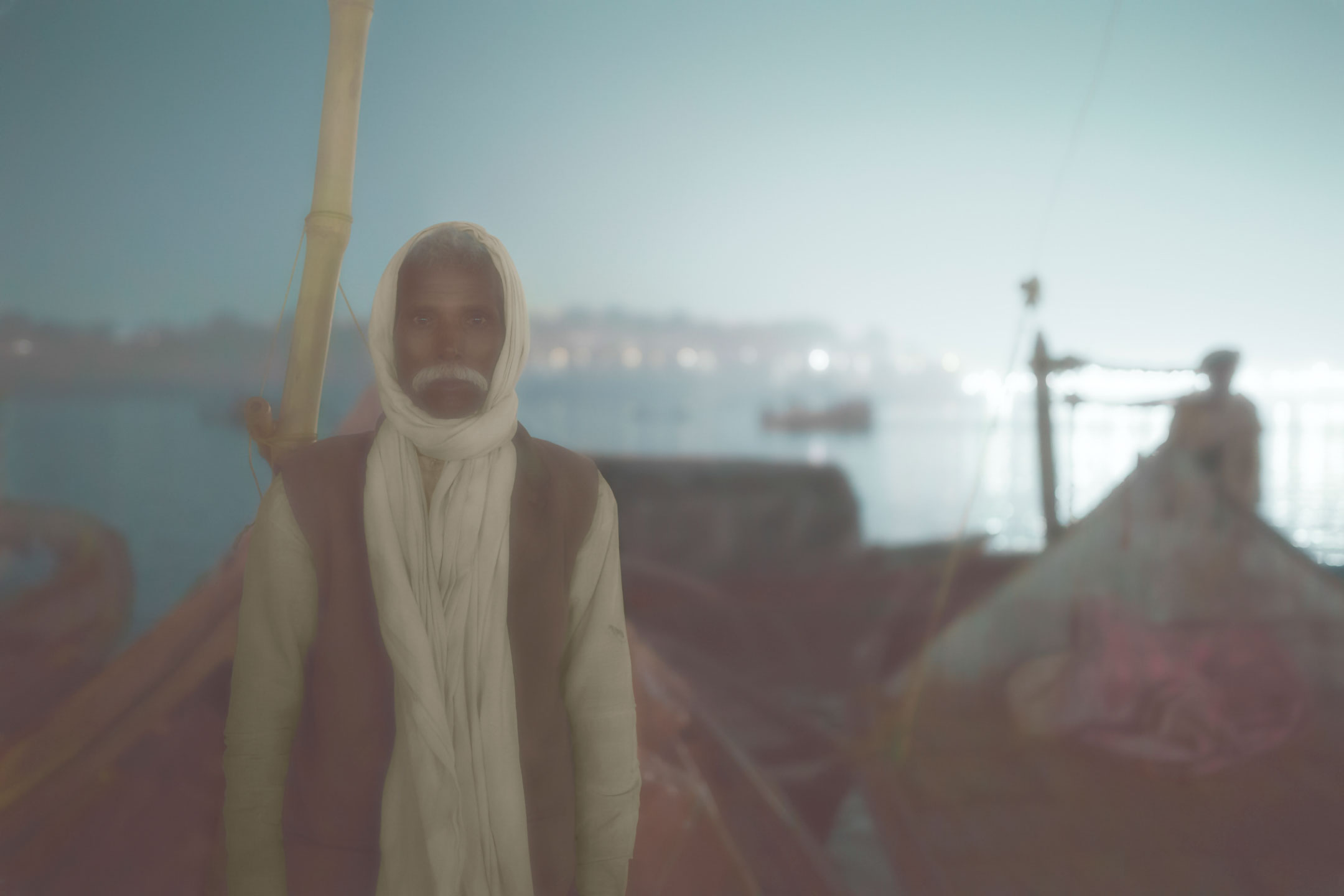
Mallaahs, the boatmen of Gangetic geography, A Photo Art series by Shibu Arakkal
Review of Mallahs, the boat of Gangetic geography, photographic series of Shibu Arakkal. For several hundred years these boatmen on the Ganga and the Yamuna have handed down their oars from father to son. I was intensely drawn to the purpose of their lives, to carry people back and forth on these rivers. Almost married to their boats, these men. To live almost all of their lives on these wooden vessels, going about their worldly chores and belonging to a tribe of menfolk, they pride themselves on being the real caretakers of these mystical rivers. Almost as if they are born on these boats and just as possibly may breath their last on it, the Mallaah men live lives removed from their families and children.
In search of the lost home
Across the world there are ongoing attempts to construct a ‘people’s history’ through photographs. Memory Projects, they are fondly called, focus mainly on the pre-digital era when photography was not as common as today. Bengali photographer Anandarup Goswami’s photography series ‘A Home of No Return’, though not directly linked with any memory project, shows certain resemblances with the latter’s style, and yet carries its own soul. A Home of No Return visually narrates the past and the present through a mixture of faded and fresh photographs.
Homomorphism II
The LGBTQ community has found for itself public spaces in urban regions. We will wait and see what they want to tell the world from that space. After all, solidarity with the cause does not mean solidarity with the acts, and it is time for the community to begin to act convincingly. This exhibition is a good starting point, and further on, there is a desperate need for clarity on the part of the activist-artists.

Elements and Fragments, Uncovering Narratives of a Temple Town
Inasmuch, every photographer that ever visited Tiruvannamalai never took notice about anything other than Ramana and the Annamalaiyar temple – their eyes glossing over everything else and their focus devoted entirely to the two ‘divine’ icons. But, there remains a Tiruvannamalai beyond, which has gone unnoticed and undocumented – invisible to the colonial gaze that is pre-occupied with its exotic fairy tales, and underwhelming for the photojournalist due to its perceived mundane-ness.


